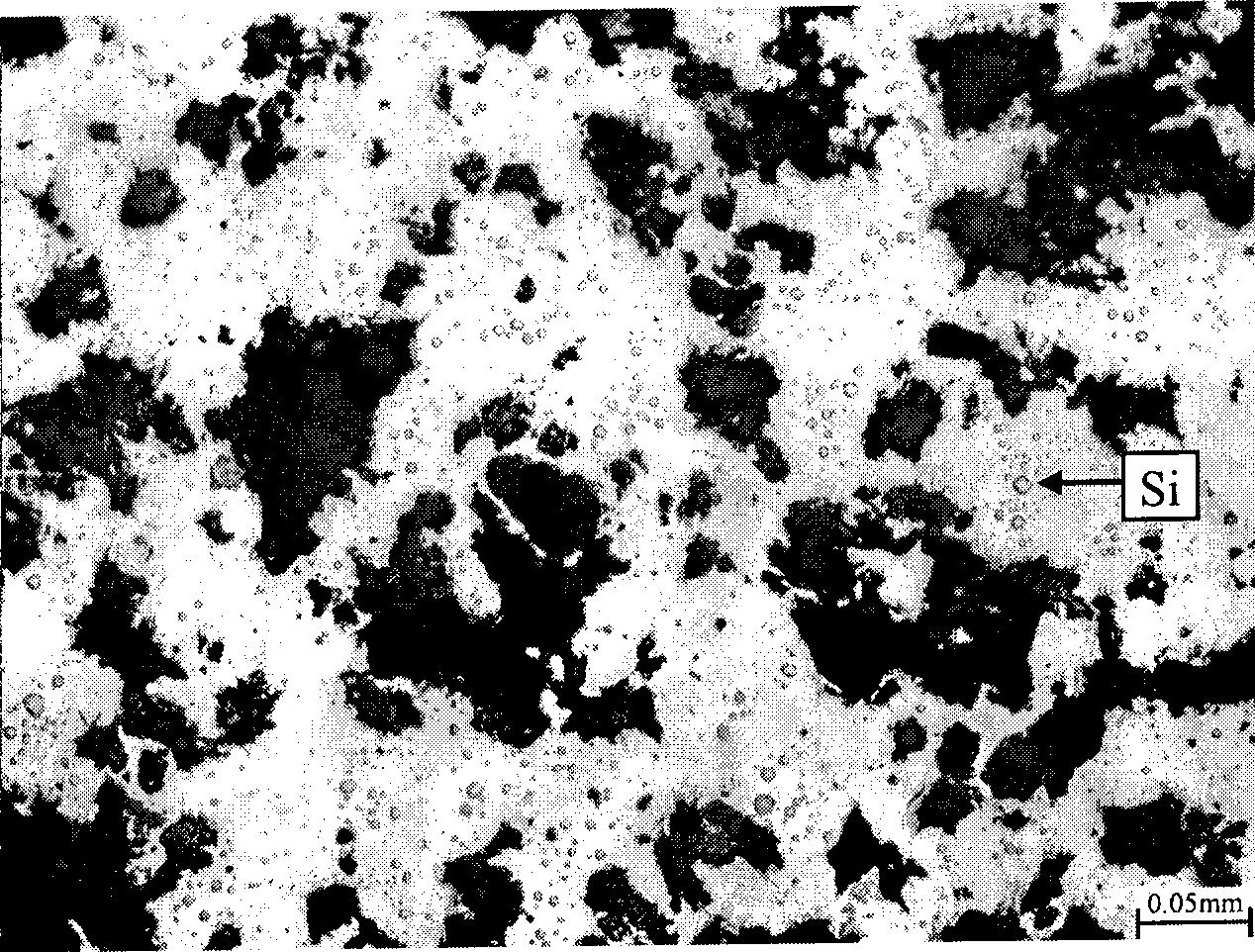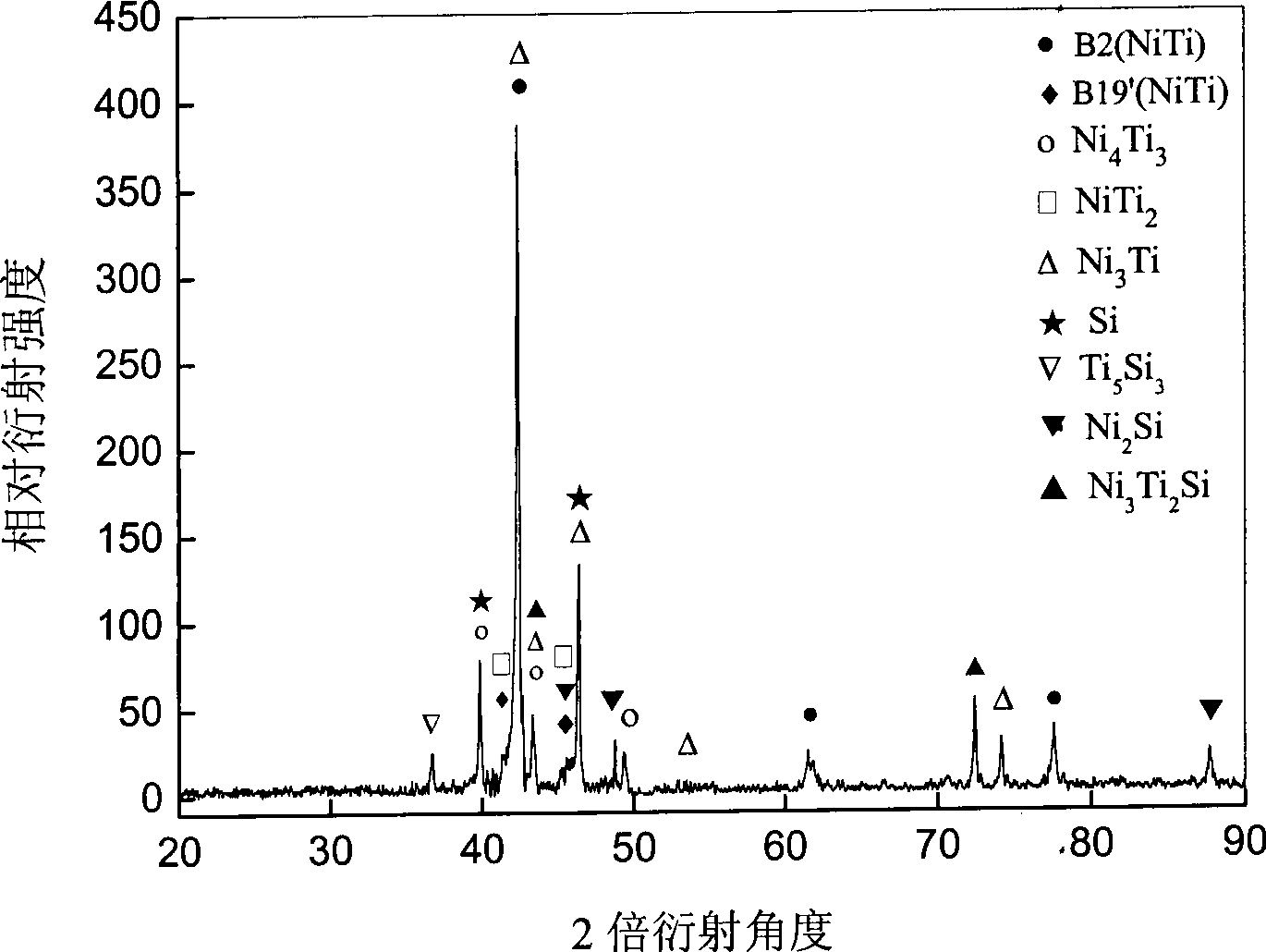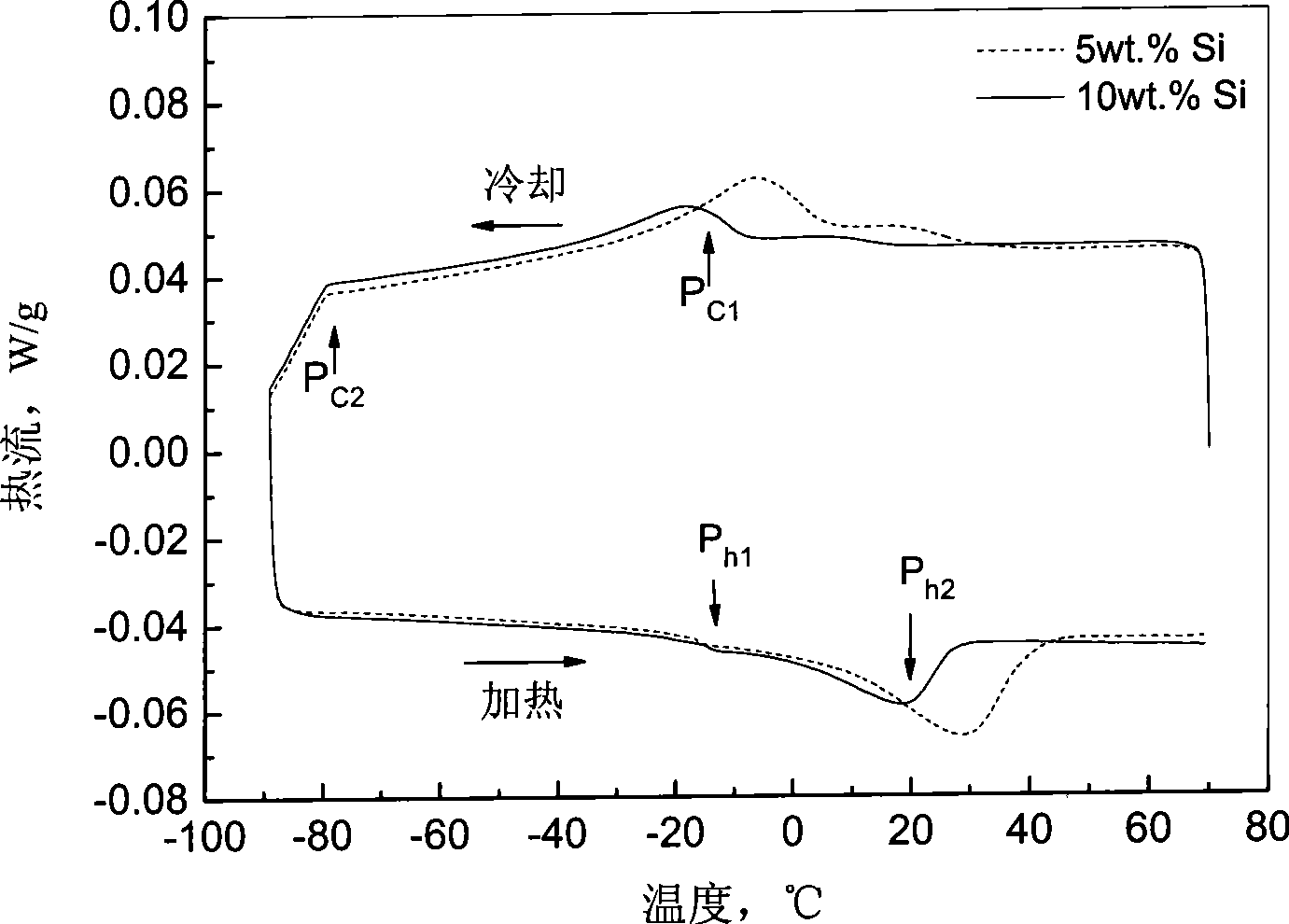Preparation of particle reinforced damping porous nickel-titanium memory alloy based composite material
A technology of particle reinforcement and memory alloy, which is applied in the field of preparation of porous nickel-titanium memory alloy-based composite materials, can solve the problems of low specific damping capacity, high density of dense nickel-titanium alloy, and low damping value, and achieve good damping performance and superelasticity The effect of improving and increasing the carrying capacity
- Summary
- Abstract
- Description
- Claims
- Application Information
AI Technical Summary
Problems solved by technology
Method used
Image
Examples
Embodiment 1
[0042] Use pure nickel powder (average particle size 57 μm) and pure titanium powder (average particle size 48 μm) according to nickel:titanium atomic ratio 50.8:49.2 and mix thoroughly for 24 hours to obtain raw material powder A. 10 wt% of silicon particles (average particle diameter: 80 μm) was added to powder A, and powder B was prepared after mixing for 5 hours. Powder B was pressed at 200 MPa into a cylindrical green body with a diameter of 16 mm and a length of 12 mm. Put the billet into a tube-type sintering furnace, under the protection of argon with a purity higher than 99.99%, heat it at 15°C / min to 750°C, and keep it for 15 minutes; then heat it at 15°C / min to 1000°C and keep it for 3 Hours, the silicon / porous nickel-titanium memory alloy matrix composite material was obtained after cooling.
[0043] Picture 1-1 Metallographic photographs of the silicon / porous NiTi-based composite material prepared for Example 1 under an optical microscope. It can be seen from t...
Embodiment 2
[0046] Use pure nickel powder (average particle size of 57 μm) and pure titanium powder (average particle size of 48 μm) according to the atomic ratio of nickel and titanium of 51:49 and mix thoroughly for 24 hours to obtain raw material powder C. 5 wt% of silicon particles (average particle diameter: 60 μm) was added to powder C, and powder D was prepared after mixing for 5 hours. Powder D was pressed at 100 MPa into a cylindrical green body with a diameter of 16 mm and a length of 12 mm. Put the billet into a tube-type sintering furnace, heat it to 700°C at 20°C / min under the protection of argon gas with a purity higher than 99.99%, and keep it warm for 20 minutes. Then heated to 1050° C. at 10° C. / min and kept for 2 hours. After cooling, a silicon / porous nickel-titanium memory alloy matrix composite material with a porosity of 38.2% was obtained.
[0047] diagram 2-1 DSC charts of the silicon / porous nickel-titanium alloy-based composites prepared for Example 1 and Exampl...
Embodiment 3
[0055] Use pure nickel powder (average particle size of 57 μm) and pure titanium powder (average particle size of 48 μm) according to the nickel-titanium atomic ratio of 50.8:49.2 and mix thoroughly for 24 hours to obtain raw material powder E. Add 5wt% alumina powder (average particle size: 80 μm) to powder E, and mix for 5 hours to make powder F. Powder F was pressed at 200 MPa into a cylindrical green body with a diameter of 16 mm and a length of 12 mm. Put the billet into a tube-type sintering furnace, heat it to 800°C at 10°C / min under the protection of argon gas with a purity higher than 99.99%, and then keep it warm for 10 minutes. Then heated to 1000° C. at 20° C. / min and then kept for 3 hours to obtain an alumina / porous nickel-titanium alloy matrix composite material with a porosity of 41.5%.
[0056] Figure 3-1 Metallographic microstructure photographs of the alumina / porous nickel-titanium alloy-based composite material prepared for Example 3 under an optical micr...
PUM
| Property | Measurement | Unit |
|---|---|---|
| Modulus | aaaaa | aaaaa |
| Modulus | aaaaa | aaaaa |
Abstract
Description
Claims
Application Information
 Login to View More
Login to View More - R&D
- Intellectual Property
- Life Sciences
- Materials
- Tech Scout
- Unparalleled Data Quality
- Higher Quality Content
- 60% Fewer Hallucinations
Browse by: Latest US Patents, China's latest patents, Technical Efficacy Thesaurus, Application Domain, Technology Topic, Popular Technical Reports.
© 2025 PatSnap. All rights reserved.Legal|Privacy policy|Modern Slavery Act Transparency Statement|Sitemap|About US| Contact US: help@patsnap.com



